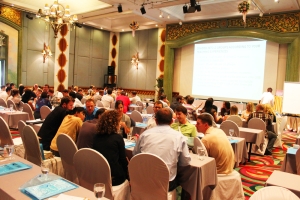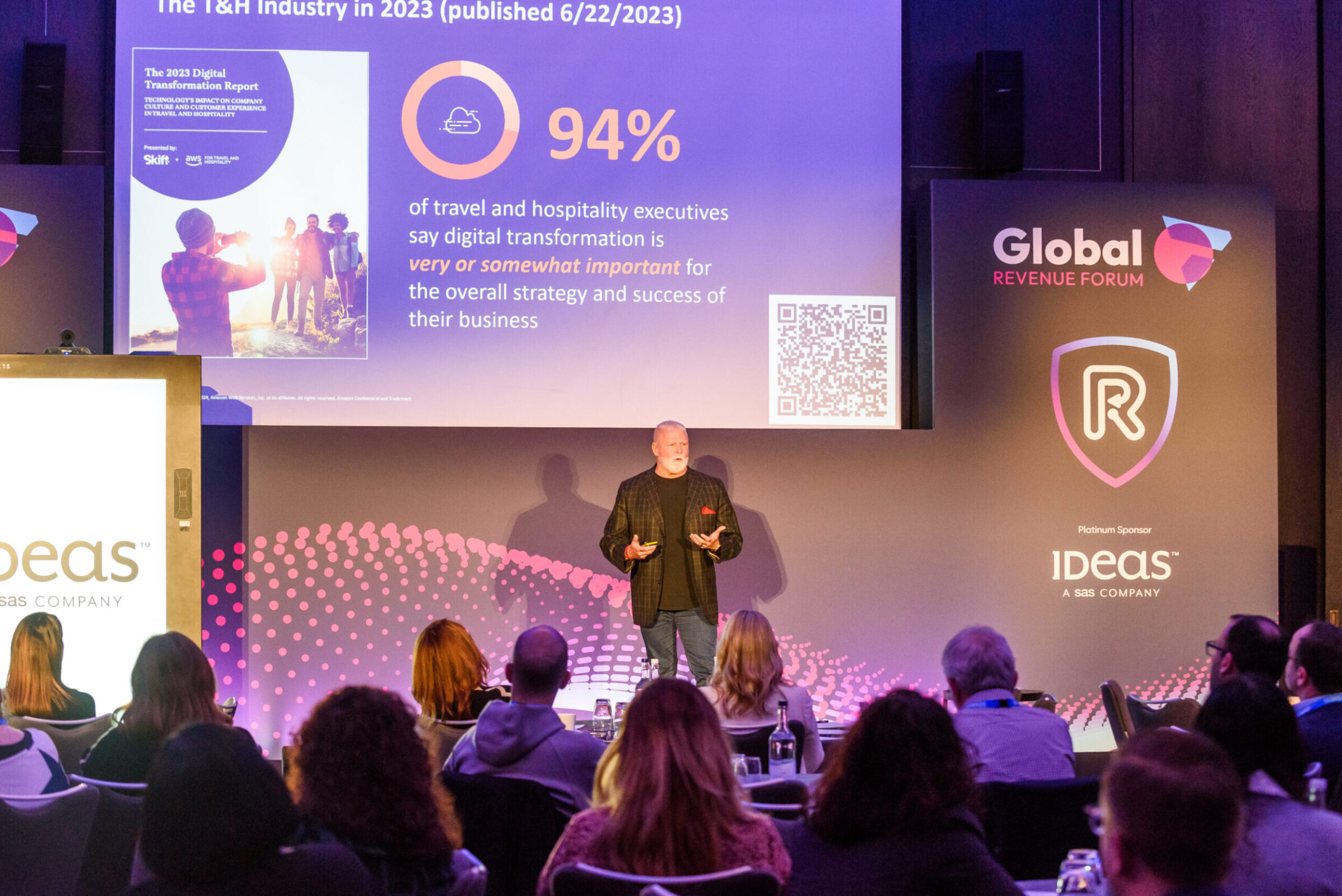Whilst the transient segment has lead the hotel market recovery to date, reports from both TravelClick and STR indicate some potential for stronger demand in the groups segment in 2014. Projections on growth size may well be hesitant, but they do highlight an opportunity to plan ahead and re-evaluate group revenue strategies for 2014.
Revenue management of meeting space can be particularly complex. The meeting and event space market has undergone significant change in recent years. Coupled with the significant drop off in groups business throughout the recession, there’s now more supply, and highly differentiated competition. New competitors include dedicated meeting space venues, re-purposing of tourism assets into meeting space, and technology. Video conferencing, webinars, screen sharing and hangouts offer an abundance of choice when considering a meeting and how it is best run within budgets that are under increasing strain. A rigorous demand for value for money is the new norm.
Where’s the difference in Function Space Revenue Management?
Revenue Management for meeting space follows the same concept in principle as that of transient rooms revenue management. However, there are some fundamental differences; one being that the capacity of meeting space will change according to layout – for example theatre style, boardroom and classroom, resulting in differences in profit potential. Further complexity comes into play when considering ancillary revenue contribution from food and beverage sales, which profoundly impacts the profit potential per customer. The sale of bedrooms packaged with meeting space will also impact transient and contracted business at times, requiring clear cut decisions on which business is best to accept
The cross-departmental sale of food and beverage, meeting space, and rooms drives the need to constantly evaluate profit potential, optimise ancillary revenue contribution, and balance all of this this alongside potential displacement of long-term transient business. Add to this misaligned incentives; sales managers incentivised for selling meeting space, revenue managers incentivised based solely on rooms revenue, and chef fighting a corner for food allocations, setting up a strategy to revenue manage meeting space can be a challenge.
Against this backdrop, it’s increasingly important to fully understand demand for meeting space, how efficiently that space is being used, and how to optimise revenues. If you’re looking to get more from your groups business, then in the absence of technology, what practical steps can you consider to support effective revenue management of meeting space? Here we offer seven steps to creating a robust group revenue strategy for 2014.
Seven steps to optimising meeting space revenues
Step 1 Ease the complexity by creating robust easy to follow guidelines – Meeting space revenue management can be very complex due to the long lead times, large wash factors, future pricing issues sometimes for an event many years ahead, and total revenue contribution. It is not always clear what business to take and what to reject. Having guidelines in place makes the process simpler and reduces risk. Accurate forecasting and the use of clearly defined sales needs and contract terms and conditions helps to direct the sales team to prospect for business that the hotel needs, when it needs it. To avoid accepting business based on volume alone, create a simple pricing guide that includes guidelines to evaluate total spend and make this available to all team members that quote for space.
Step 2 Determining performance – The starting point for developing a full performance analysis is to understand occupancy levels, demand patterns and revenue generated per space. This requires an appreciation of demand and booking behaviour by market segment, and understanding how the mix of segments affects revenue performance. Put in place tracking to forecast demand covering current occupancy by meeting room, space or day part, a full assessment of revenues by department, and an analysis of lost and denied business, to evaluate total demand. Setting up the right processes to track this data is vital to give a meaningful insight into business potential and booking pace. Typical performance benchmarks to consider tracking meeting space revenue management include RevPOGS, revenue per occupied group space, RevPAS, revenue per available square metre, and revenue per delegate.
Step 3 Track contract status and implement vigorous diary management Processes used to track contract status need to be fully understood and rigorously employed so that the team has a complete awareness of group business status at any time; is that group on option, tentative or confirmed?
Diary management plays a critical role in understanding demand. Business sitting on option is not business banked, and presents a high risk of cancellation. In this case, revenue and sales departments need to work together to improve conversion ratios, monitor cancellations and where appropriate, use overbooking strategies to maximize meeting room occupancy.
Step 4 Create a forecasting toolkit To generate an accurate forecast will require tools to track booking pace, business mix, plus some reliable indicators of lost and denied business. Tracking systems – even manual systems – need to accurately record all turned away enquiries no matter what the reason, as well as all cancellations and amendments to give visibility on unconstrained capacity. This is imperative in determining pricing based on true demand, rather than basing pricing decisions on constrained capacity which limits opportunity to capitalise on key events and high demand periods. Tracking contribution (profitability) of groups over transient business will put the value of the group into perspective. Create a methodology for calculating transient displacement during forecasted periods of high transient demand, and feed these factors into the forecast.
Step 5 Creating a strategy to optimise demand – Once a clear picture of demand and demand drivers is created, build group selling strategies aligned with transient to maximize opportunities for improving revenues. Identify periods of high and low demand and create a pricing strategy with flexibility to cover all demand periods, in particular to protect both meeting space and transient bedrooms when forecasting to fill, as well as to ensure that transient shoulder nights and meeting space on low demand days are attractively priced and as competitive as possible. Use fencing strategies to implement duration controls where needed both to select the most profitable customers during high demand and to encourage and reward customers during periods of low demand.
Step 6 Implement, monitor and evaluate No revenue strategy would be complete without putting in the right structure for constant evaluation and review, and amending the strategy if necessary. Continuous re-evaluation of market demand, pricing policies, the impact of terms and conditions and competitor tracking will help build a picture of demand drivers and build a credible history to support the development of relevant data that can be fed back into demand management, and strengthen future forecasts. In most cases the large amounts of information collected are suitable for data mining, providing opportunities for decision-making based on both historical and future trends. Accurate forecasts using informed decisions will in turn ensure pricing reflects the anticipated demand to keep one step ahead of the competition at all times. This requires team effort across departments and will not always be easy. Create a reliable method to measure performance of the strategy and keep your sales and revenue teams motivated to keep the strategy alive.
Step 7 Creating the Revenue Culture – Finally, there’s a need to set up communication channels to ensure the effective creation of a revenue culture so that communication of revenue decisions is fully understood across all those responsible for selling meeting space. It’s a fine balance, but providing guidelines and some simple tools to track demand, business mix and booking pace will help keep sales and revenue aligned. Revenue teams can help direct sales through accurate forecasting, and sales can provide market knowledge to support profitability assessment, wash factors and client attrition rates, all resulting in more informed decision making, and optimising overall profit potential.
Want to know more? To understand more about implementing revenue management for function space come to one of our Meeting and Event Space Revenue Management workshops. Next Workshop is September 11th in London. To join us, or for more information please get in touch
This post appeared as a Guest Post on the Hospitality Evolution Resources Blog.








